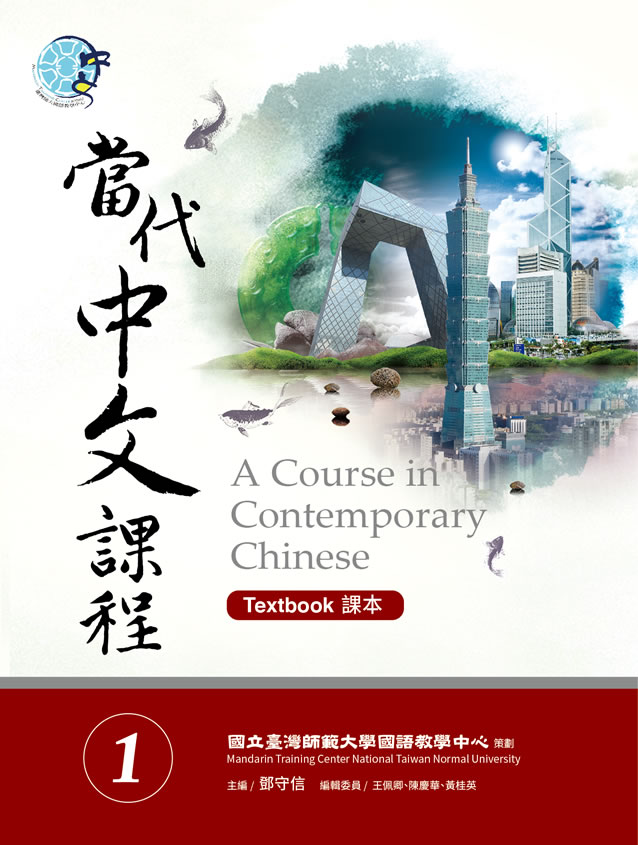A Course in Contemporary Chinese (6-volume series)
A Course in Contemporary Chinese (6-volume series)
Chief editor: Shou-hsin Teng
Editors:
Volume1: Peiching (Jessica)Wang, Ching-Hua Chen, Kuei-ying (Jennifer)Huang
Volume1: Peiching (Jessica)Wang, Ching-Hua Chen, Kuei-ying (Jennifer)Huang
Volume2: Hui-Chuan Wang, Yih Fen Sun, Chongren Liu
Volume3: Chiung-Shu Wang, Cuiying Lu, Te-Chao Lu
Volume4: Kuo-Yun Ting , Mu-Ling Hu, Shu-Mei Chen
Volume5: Mu-rong He, Yun-Lin Hung, Chiao-Ju Teng
Volume6: Wen- Chuan Wang, Hsiu-Rong Hong, Ching-Tzu Chen
Introduction
This six-volume series is a comprehensive learning material that focuses on spoken language in the first three volumes and written language in the latter three volumes. Volume One aims to strengthen daily conversation and applications; Volume Two contains short essays as supplementary readings; Volume Three introduces beginning-level written language and discourse, in addition to extended dialogues. Volume Four uses discourse to solidify the learner’s written language and ability in reading authentic materials; Volumes Five and Six are arranged in topics such as society, technology, economics, politics, culture, and environment to help the learner expand their language utilisations in different domains. Each volume includes a textbook, a student workbook, and a teacher’s manual. In addition, Volume One and Two include a practice book for characters.
Level of Students
A Course in Contemporary Chinese 《當代中文課程》is suitable for learners of Chinese in Taiwan, as well as for high school or college level Chinese language courses overseas. Volumes One to Six cover levels A1 to C1 in the CEFR, or Novice to Supeior levels in ACTFL Guidelines
Overview
- The series adopts communicative language teaching and task-based learning to boost the learner’s Chinese ability.
- Each lesson has learning objectives and self-evaluation to give the learner a clear record of tasks completed.
- Lessons are authentic daily situations to help the learner learn in natural contexts.
- Lexical items and syntactic structures are presented and explained in functional, not structural, perspectives.
- Syntactic, i.e. grammatical, explanation includes functions, structures, pragmatics, and drills to guide the learner to proper usage. Classroom activities have specific learning objectives, activities, or tasks to help fortify learning while having fun.
- The “Bits of Chinese Culture” section of the lesson has authentic photographs to give the learner a deeper look at local Taiwanese culture.
- Online access provides supplementary materials for teachers & students.

